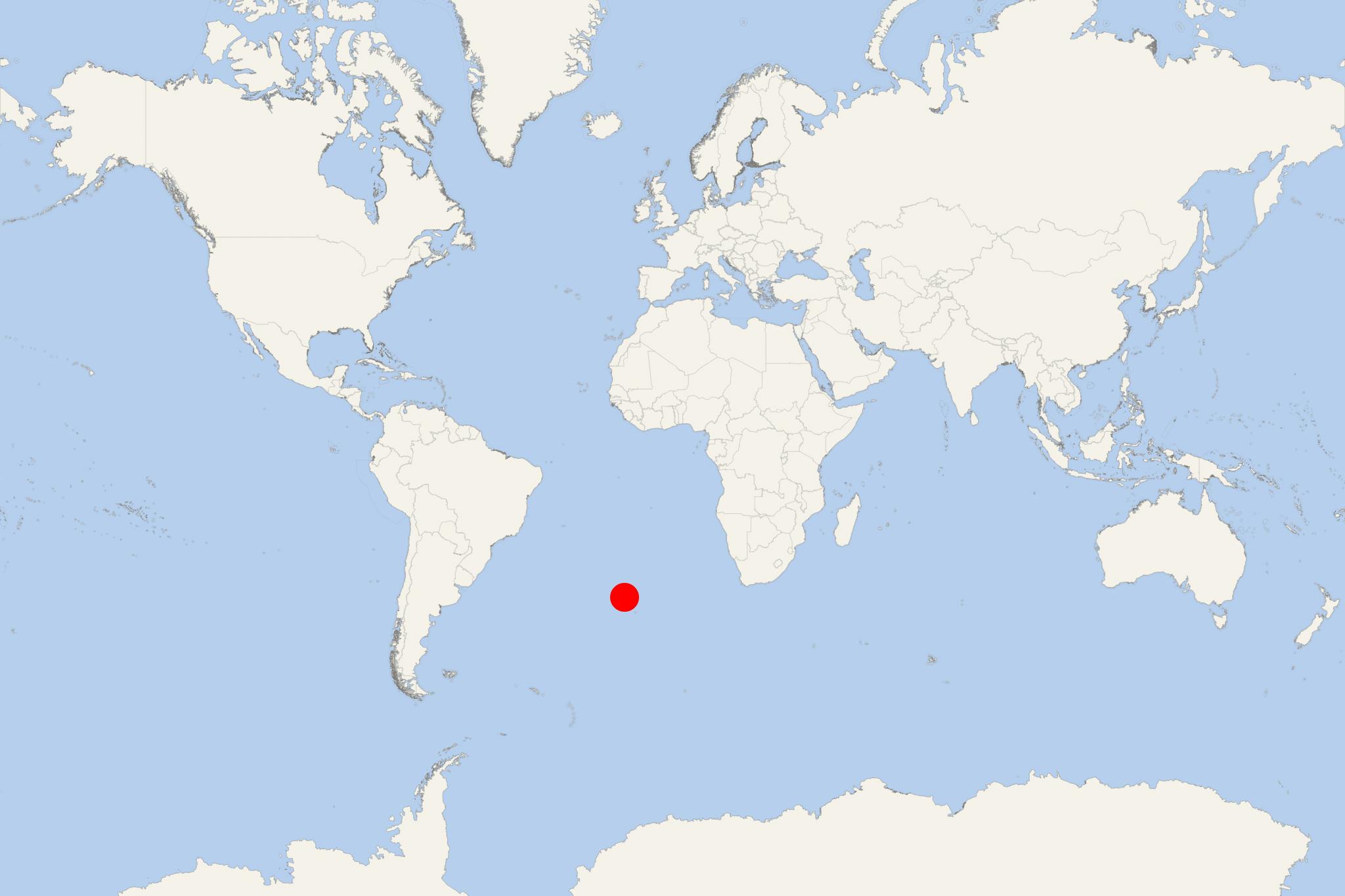Inaccessible Island (St Helena UK)
Cruise Port schedule, live map, terminals, news
Region
South America
Local Time
2025-04-04 00:49
 65°F
65°F 18.1°C

 Gentle breeze
Gentle breeze4.7 m/s
 66 °F / 20 °C
66 °F / 20 °C 62 °F / 17 °C
Inaccessible Island is located in the South Atlantic Ocean and is part of the Tristan da Cunha archipelago. This island group is one of the British Overseas Territories - the dependency of "Saint Helena, Ascension, and Tristan da Cunha". Saint Helena is the UK's second-oldest dependency (overseas territory) - after Bermuda.
The island has a total area of just 14 km2 (5,4 mi2) and the highest elevation point (Cairn Peak) 449 m (1473 ft). Tristan da Cunha Island is located just 45 km (28 mi) to the northeast. Since 1976, Inaccessible Island is a wildlife reserve (protected nature park) and since 2004 - a UNESCO World Heritage Site. In 1997, the Island's territorial waters (land distance 22 km / 14 mi) were declared a marine nature reserve.
The Island was discovered by the Dutch in 1656 - or 146 years after the Tristan da Cunha Island was discovered by the Portuguese. The unusual name "Inaccessible" comes from the fact that the Dutch sailors who first landed here were not able to reach the interior as the isle is an extinct volcano with steep slopes. The first landing was in 1803, made by US sealers (seal hunters).
In 1873, the HMS Challenger ship visited the isle to examine its flora and fauna. The 1938's Norwegian Scientific Expedition spent here 3 weeks and managed to access its plateau and to extensively catalogue all the plants and birds there. In 1962, the Royal Society's expedition (to Tristan da Cunha) tried but failed to access and map the island's interior. The island's first detailed mapping was done in 1982-1983 by students of Denstone College (England), who also studied it (flora, fauna, geology) and catalogued more than 3000 birds.
Currently, only guides from Tristan da Cunha are officially allowed to take cruise ships to Inaccessible Island. The Island is visited mainly by Tristan da Cunha islanders. Three ships do commercial fishing in these waters (permission is for up to 3 km / 1,9 mi from the shore).
At least 3 shipwrecks are available off the island's coast:
- "Blenden Hall" ship was chartered to the British "East India Company". In 1821, adverse currents carried it towards Tristan da Cunha. Instead of passing by St Helena Island, the vessel with a total of 84 people (passengers and crew) ran aground on the Inaccessible suffering a broken back. however, its forecastle was carried by sea currents inshore. Only two of all the 84 on the ship survived.
- The other two shipwrecks are of "Shakespeare" (at wrecked Pig Beach, 1883) and "Helen S Lea" (wrecked at North Point, 1897).
In 1816, goats and pigs from Tristan da Cunha were brought to the Inaccessible to serve as a food source for the established settlement. Cattle, sheep, cats, and dogs were also introduced but none of those remain today. The island also doesn't have any land mammals, reptiles, butterflies, snails. It has 64 plant species (among those 20 flowering plants and 17 fern species). The fauna is represented mostly by seals (fur- and southern elephant), southern right whales (baleen whale) and dusky dolphins.
The island (identified as IBA / "Important Bird Area") is best known for the world's smallest flightless bird - the "Inaccessible rail" (5,000 pairs). It is also a seabird breeding site and has some endemic (existing in certain places) landbirds. Among those are northern rockhopper penguins (around 27,000 pairs), albatrosses (Tristan, sooty, Atlantic Yellow-nosed / 1100 pairs), broad-billed prions (0,5 million pairs), great shearwaters (2 million pairs), little shearwaters (50,000 pairs), petrels (spectacled, soft-plumaged / 50,000 pairs, white-faced storm petrels / 50,000 pairs, white-bellied storm petrels / 50,000 pairs), also Antarctic terns, Tristan thrushes, Inaccessible buntings.
